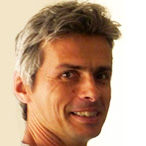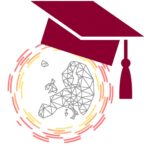On January 28th, 2020, the Chan Zuckerberg Initiative (CZI) announced over $1.3 million in funding to support Global BioImaging (GBI), an international network of bioimaging facilities and communities. These networks of core imaging centers help researchers better understand and identify the biological mechanisms of health and disease using cutting-edge technology.
While imaging of molecules, cells, and tissues remains central to both biomedical research and clinical practice, progress in the imaging field has been slowed by uneven access to advanced microscopy methods. The grant supports GBI’s efforts to strengthen community building and training worldwide to address the practical challenges of operating open access tools for imaging technologies in the life sciences.
“Imaging of molecules, cells, and tissues is integral to understanding disease, and core imaging facilities that use the latest microscopy tools to further the research of hundreds of biomedical scientists are fundamental to progress,” said CZI Head of Science, Cori Bargmann. “By bolstering the development of Global BioImaging’s central hub and investing in training and data exchange between imaging centers and communities, we hope to increase global collaboration and accelerate potentially life-saving scientific breakthroughs.”
The three-year grant will support Global BioImaging’s core activities, allowing the organization to develop a self-sustaining administrative framework. CZI funding will also allow Global BioImaging to expand its worldwide network; intensify training, job shadowing, and outreach efforts; and strengthen links to the biomedical imaging community. In addition, funds will support nations to strengthen the scientific foundations of imaging in their own countries. Global BioImaging’s community includes members from the United States, Europe, Australia, Singapore, Canada, Mexico, India, Japan, South Africa, and more.
“Discussions with imaging scientists have confirmed a strong need for training material and courses for staff that work at imaging centers, information on best practices for data handling, and increased opportunities for collaboration,” said CZI Imaging Program Lead, Stephani Otte. “We are excited to help meet these needs and spur scientific discovery in this critical area of biomedicine.”
CZI’s continued investment in the imaging field is part of its ambitious mission of supporting the science and technology that will make it possible to cure, prevent, or manage all diseases by the end of this century. Through its Imaging Scientists program, CZI supports imaging scientists and staff scientists working at core facilities in the U.S., increasing collaboration between biologists and technology experts and improving the imaging tools that scientists use.
About the Chan Zuckerberg Initiative
Founded by Dr. Priscilla Chan and Mark Zuckerberg in 2015, the Chan Zuckerberg Initiative (CZI) is a new kind of philanthropy that’s leveraging technology to help solve some of the world’s toughest challenges — from eradicating disease, to improving education, to reforming the criminal justice system. Across three core Initiative focus areas of Science, Education, and Justice & Opportunity, we’re pairing engineering with grant-making, impact investing, and policy and advocacy work to help build an inclusive, just and healthy future for everyone. For more information, please visit www.chanzuckerberg.com.
About Global BioImaging
Global BioImaging is an international network of imaging infrastructures and communities, which is coordinated by the international organization EMBL (European Molecular Biology Laboratory, Heidelberg, Germany). Recognizing that scientific, technical and data challenges are universal and not restricted by geographical boundaries, Global BioImaging brings together imaging facility managers and technical staff, and scientists and science policy officers from around the globe, to join forces and build capacity internationally. It provides a unique opportunity for international discussion and cooperation to tackle the practical challenges as well as the strategic questions linked to operating open access, cutting-edge imaging centers. By doing so, Global BioImaging supports the international scientific community to build the infrastructure they need to boost fundamental and applied research and drive breakthrough discoveries in the life sciences and beyond. For more information, please visit www.globalbioimaging.org.





